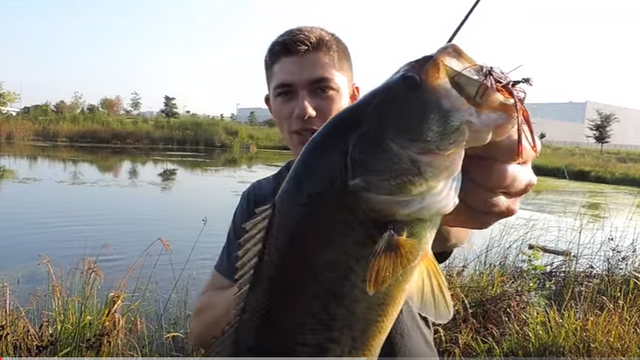
7 Tips For Digging Bass Out Of The Grass
When summer is in full swing, aquatic vegetation in your area is likely at or near its seasonal peak. As frustrating as it can be to fish, thick grass is also one of the most common places big bass live, particularly if your home lake is pressured or in the Deep South. Bass in grass use thick vegetation like a security blanket and air conditioner all in one. Once summer sets in, fisheries biologists have radio tracked bass that never move more than 20 feet from a patch of thick vegetation throughout the whole summer period.So, you’ve got bass in grass set up in heavy vegetation, but they won’t come up and eat a frog… What do you do? We polled some of the best in the business for their tips to hooking bass in thick vegetation, keeping them pegged, and getting them into the boat:
1. Use Braid
This should go without saying, but using monofilament or fluorocarbon when punching thick grass is an exercise in futility. There are times when stretch is definitely a positive, but this ain’t one of them. Braid has no stretch, and will actually cut through vegetation when fighting hooked fish, increasing your landing percentage. Most top punchers use at least 50 pound braid for the thick stuff, and many opt for 65 pound or heavier.
2. Come Prepared
Your line isn’t the only thing you need to prepare when flipping heavy cover for bass. Make sure your rod and reel are also up to the task. Look for a good quality flipping stick in the 7 foot 6 inch to 8 foot range with a sensitive tip and plenty of backbone. Pair it to a high speed reel as well – it’s important to stay on a fish once hooked, and it’s not easy to do that with a low speed reel.
3. Snell Your Hooks
You might not think of the knot as an important part to a punching set up, but it is. Most traditional knots will rotate a bit on the hook eye when jerked, allowing the hook to move around in the fishes mouth. This isn’t a big deal with little weights or in open water, but in heavy vegetation with a big weight, you need to ensure the hook rotates away from the weight into the fishes jaw every time. Tying a snell knot ensures this. Snelling your hook means the line is actually tied to the shank instead of the eye – which causes it to get maximum rotation when you swing. Spend a little time learning the knot and you’ll never go back.
4. Don’t “Snap” Your Hook Sets
As tempting as it may be to drop your rod tip and lower the boom, in heavy vegetation doing so will likely cost you more fish than you’ll land. With the braid and heavy weight, good penetration is much more important than having an epic hook set. Watch the best flippers fishing grass, and you’ll see that they simply reel tight and pull. This prevents the big weight from knocking the fish’s mouth open, and ensures the hook is good and buried.
5. Stay On Them
The most important part of landing bass in grass usually occurs in the couple seconds immediately following the hook set. It’s extremely important that you don’t give the fish any time at all to get turned around and buried. Instead, get on the fish immediately, and reel until you get the fishes head pointing up. More often than not, if you get on them quick enough, they will actually kick their way out of the mat and into the clear.
6. Slim Down Your Presentation
To get bites, you’ve got to get your bait to them. Unnecessary appendages and bulky plastics don’t help get more bites, and they’re just one more thing that can get hung and prevent you from burying the hook. The most popular punching baits are compact, streamlined, and designed to slide easily through the grass and into a fish’s mouth.
7. Don’t Be Afraid To Go In After Them
Even if you do everything right, there will be times when a fish bests you, and just won’t come out of the grass. In these situations, it’s important to maintain your cool, keep pressure on them, and go in and get them. If you can feel the fish is still on there – you can likely get it. Slide on in with the trolling motor, follow the line down, and feel for the fish. You’d be surprised at how calm they often become when completely wrapped in grass.
Catching Bass In Grass Video!
Updated June 21st, 2017 at 3:08 PM CT
